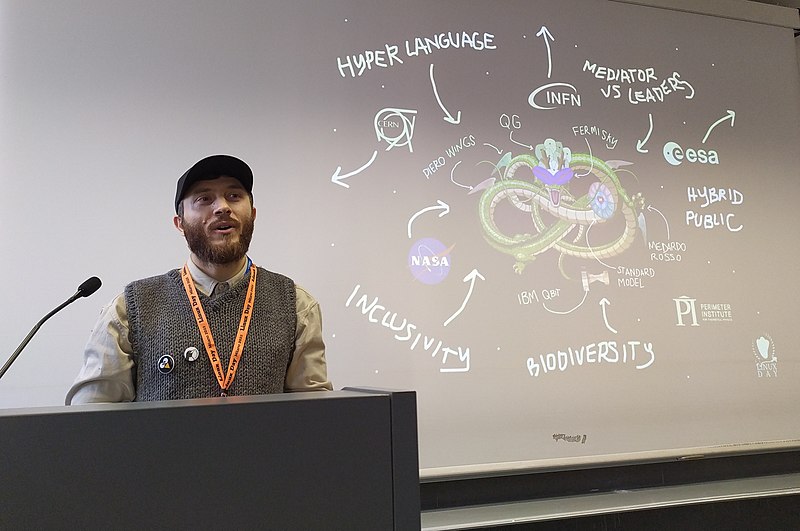Creating the Introduction, Step 1: Grab Attention
“It was a pleasure to burn.” —Ray Bradbury, Fahrenheit 451
“It was the best of times, it was the worst of times.” —Charles Dickens, A Tale of Two Cities
“Mr. and Mrs. Dursley, of number four Privet Drive, were proud to say that they were perfectly normal, thank you very much.” —J.K. Rowling, Harry Potter and the Sorcerer’s Stone

Well-known authors often admit that the opening line of a book is possibly the most important one in the entire book. Authors, like any other profession, need to make a living to maintain their lifestyle. This requires them to sell copies of their books, so authors must possess the capability to hook a reader within only one or two short lines to entice further reading. Most people, when searching for a new book, look first at the covers, and then to the first line of the story, and if it sufficiently grabs their attention, they continue perusing the pages. However, if those first lines fall flat, the book gets closed, set down, and likely forgotten forever.
A similar phenomenon occurs within the first few seconds of a speech. The first words uttered or the first actions that may communicate a message to an audience become absolutely critical. Borrowing from the previous analogy of a speaker to an author, imagine picking up a book that began with, “Hi, everyone. My name is Stephen King, and today, I’d like to share a really scary story with you about homicidal clowns.” Such a book promises little excitement, and most people would likely put it down without hesitation. In a similar light, a speaker who gets up before an audience and “warms up” with a casual greeting, small talk, and an awkward announcement of the topic tends to put off most audiences’ attention spans. Considering that the average human transient attention span (temporary response to a stimulus) lasts around 8 seconds (Dukette & Cornish , 2009), a speaker has an extremely brief window of time in which to grab the audience’s attention and, subsequently, sustain it for the duration of the speech. In fact, the shorter the time the speaker has to speak, the more important this initial attention getter becomes. If given a limited amount of time to speak, don’t waste it on anything that does not further the purpose for speaking.
To grab an audience’s attention, try using one of the several time-honored techniques that continue to work today, despite all the various advances in technology. These include quotations, stories, rhetorical questions, shocking or unexpected information, and compelling visual aids or demonstration.
Quotations
A great quotation related to the speech topic often provides wisdom from a well-respected source that says something valuable or profound in much fewer words than most people can manage using many more. Choose quotes that demonstrate elegance, eloquence, or clever wit, yet make sure they remain relevant to the topic. Avoid using fun or humorous quotations for the sake of it, for this may make the audience feel cheated. Consider pulling quotations from websites, like BrainyQuote.com or GoodReads.com, works of literature, poetry, film, or even from personal acquaintances. Quotes can work especially great at the beginning and ending of speeches.
Stories
Providing a story or a narrative helps speakers frame the topic for the audience. Stories provide speakers with a way to personalize a topic by helping audience members identify with the characters, events, or places within the story. Also, stories can entertain and engage, further reinforcing the idea of using an attention getter at the beginning of a speech. Stories can present “what if” scenarios that give the audience a hypothetical situation that illustrates the main point of the speech. Stories can also come in the form of real-life anecdotes based on personal experiences, those of others, or even events portrayed in fictional works like television, film, or literature. Select a story for both its relevance to the topic, but more importantly, its ability to resonate, or strike a familiar chord, with the audience.
Knowing the audience in advance becomes critically important when selecting the perfect story to illustrate or frame a point.

Asking Questions
“According to the U.N., roughly 734 million people live on less than two dollars a day. Could you?” This rhetorical question, or question designed to evoke a thought or emotive response from an audience, requires no answer. Starting a speech with a question like the one above immediately cuts to the point, while simultaneously provides the audience concrete information and gets them to think about the main idea of the speech. Delivering a rhetorical question effectively requires skill, though, so inexperienced public speakers should avoid using them until they gain a bit more experience. Deliver the question slowly, deliberately, and follow it with a brief pause that allows the audience to consider what they heard. Too short a pause, and the audience does not have adequate time to think, while too long a pause runs the risk of having the audience actually start responding to the question. Finding the right balance of time takes skill, but once perfected, gives the speaker a powerful opening tool for grabbing attention. In addition to this deft use of a pause, the speaker should also follow up the question by explaining how the rest of the speech will address the nature of the question.
In a quick poll the speaker poses a question that requires little commitment from the audience, other than raising a hand. For example, using the topic above, the speaker might start by saying, “Can I get a quick show of hands for everyone in this room who currently has a job?” Gaining a small showing of audience involvement like this provides a highly effective way to grab attention, and the critically thinking speaker can combine this technique with the rhetorical question to further drive home an important point. For example, following the question above, the speaker could say, “Now, keep your hand up if you make less than two dollars a day at your job, just like the other 734 million people in the world who make this wage or less, according to the U.N.” Such strategies have risks though, especially when they backfire, such as when audience members do not raise their hands as expected, or when a speaker ends up with more audience involvement than previously desired. Use discretion, and always have a backup plan.
Unexpected Information
“Just how big is a billion? To put this in perspective, let us look at a single second. Now, let’s figure out how much time passes in one billion seconds. Any guesses? It takes more than 31 years. If you started counting to one billion when Orson Welles’ War of the Worlds radio broadcast convinced some Americans that aliens had invaded the country in 1938, you’d finish counting around the time Neil Armstrong took his first step on the moon.” Using a set of statements like this to arrive at an unexpected conclusion would provide a great segue to kick off a speech explaining a concept like the federal deficit, especially if the speaker wished to put into perspective the scope of the federal budget. Statements such as these stimulate audience members’ curiosity and keep them listening for more useful information. Another way of approaching this, but also combining the technique with gaining audience involvement, would occur if the speaker asked every other male in the room to raise his hand and then asked every third female in the room to raise her hand as well. Then, the speaker could explain to the audience that, according to the Damon Runyon Cancer Research Foundation, the statistics show that the people with their hands in the air represent the odds of receiving a positive diagnosis for some form of cancer. While sobering and somewhat macabre, such involvement causes the audience to feel invested and personally related to the topic from that point forward.
Visual Aids and Demonstrations

Chapter 10 will discuss the impact of visual aids in much more detail. Suffice to say, visual aids can provide a speaker with powerfully gripping opening techniques. Additionally, demonstrations may provide an audience with a visually compelling reason to listen as well. A student delivering an informational speech on the martial art of tai chi may walk slowly and deliberately out into the center of the room, take a deep breath, and, in silence, begin performing various forms and poses inherent to the art. Without saying a word, such a demonstration effectively captures an audience’s interest to hear more.
Refer to Current or Historical Events
“Last week we noted the founding of this great college in 1886, with a big celebration in the campus commons. The first students to graduate were nursing students, and they received their diplomas in 1890. Since then, there have been thousands of nurses who got their education right here.”
The above example refers to both the past and the present. A nursing student attending this college might use this as a good attention getter for a speech about some element of nursing or the medical field. Generic yet personal, it immediately engages the audience and brings them personally closer to the topic and its relevance.

